PewDiePie Games: A Complete List of Titles He’s Played (Amnesia, Elden Ring, Clash of Clans & More)
Felix Kjellberg, better known as PewDiePie, isn’t just a YouTube personality; he’s a cultural phenomenon whose roots are deeply intertwined with the world of gaming. For over a decade, his channel has been a major hub for online gaming content, influencing trends and entertaining millions. This article aims to provide a comprehensive overview of the vast landscape of PewDiePie Games – exploring the iconic titles he’s played, the games developed specifically for him, and his undeniable impact on the gaming industry, covering everything from Amnesia and Elden Ring to Clash of Clans and beyond.
I. Main Content
A. Defining PewDiePie’s Gaming Journey and Influence
H2: The Evolution of PewDiePie’s Gaming Content
PewDiePie’s journey through the gaming world on YouTube is a long and fascinating one, spanning more than a decade and mirroring the evolution of online video content itself. His approach to gaming content wasn’t static; it underwent significant transformations throughout his career. What began as a niche focus, primarily centered around horror games that leveraged his expressive reactions, gradually expanded into a much broader spectrum of genres and styles. This evolution reflects not only changes in the gaming landscape and YouTube platform but also PewDiePie’s personal growth and shifting interests as a creator. Understanding this trajectory is key to appreciating the full scope of PewDiePie Games.
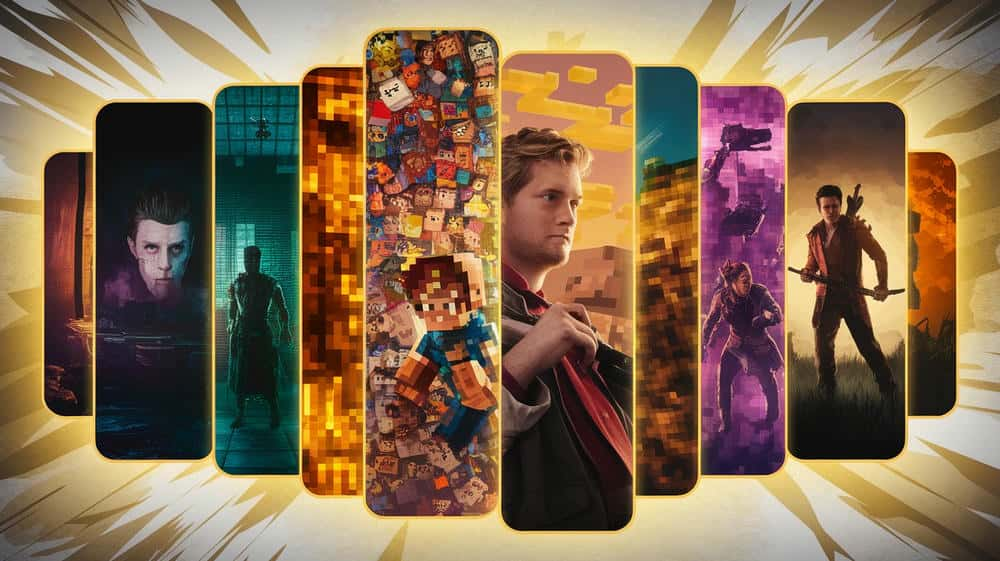
* H3: From Early Horror Screams to Diverse Gameplay Styles
The initial phase of PewDiePie’s channel was almost synonymous with horror games. Titles like Amnesia: The Dark Descent became his playground, and his exaggerated, often terrified, reactions – the screams, the frantic commentary, the sheer panic – became his signature style. This raw, reaction-heavy approach resonated powerfully with early YouTube audiences, making horror gameplay not just watchable but highly entertaining. However, as his channel grew and the YouTube landscape matured, PewDiePie began to diversify. He transitioned beyond the confines of horror, exploring indie titles with unique concepts, diving into massive AAA open worlds, dabbling in mobile games, engaging with narrative-driven experiences, and even revisiting classics like Minecraft. This broadening scope demonstrated his versatility and ability to adapt, keeping his content fresh and appealing to a wider audience.
* H3: Key Shifts in Content Focus Over the Years
Several distinct eras mark PewDiePie’s gaming content journey, reflecting strategic shifts and responses to the changing digital environment.
Here’s a look at some key transitions:
- The “Let’s Play” Horror Boom: His early career was defined by the explosive growth of “Let’s Play” videos, particularly within the horror genre. His Amnesia series was a cornerstone of this era, establishing his channel and influencing countless other creators.
- Diversification and Indie Spotlight: As his channel matured, he moved beyond purely reaction-based content, showcasing a wider variety of games, including many indie titles that benefited immensely from his exposure. This period saw more varied commentary styles.
- The Minecraft Resurgence (2019): A pivotal moment came with his unexpected return to Minecraft. This series wasn’t just popular; it was a phenomenon, causing a massive spike in his viewership and engagement, largely driven by nostalgia and the emergent narrative he created.
- Shift Towards Streaming: While edited videos remained a staple, PewDiePie increasingly incorporated livestreaming, initially on platforms like DLive and later primarily on YouTube. This allowed for more direct, real-time interaction with his audience during gameplay.
- Focus on Personal Enjoyment: In more recent years, particularly after relocating to Japan and becoming a father, his gaming content often appears driven more by personal interest and enjoyment rather than chasing trends, featuring games like Elden Ring or titles he genuinely wants to explore.
These shifts were influenced by a combination of factors: evolving audience preferences, changes in YouTube’s algorithm and monetization policies, his own changing interests, and a conscious effort to maintain relevance and authenticity in an ever-crowded online space. Each phase contributed to the complex tapestry of PewDiePie Games.
H2: Understanding the “PewDiePie Effect”
The term “PewDiePie Effect” emerged to describe the significant, often dramatic, impact PewDiePie’s coverage could have on a video game’s visibility, popularity, and sales. In the peak years of his influence, featuring a game on his channel, especially a lesser-known indie title, could catapult it from obscurity into the mainstream consciousness almost overnight. This wasn’t just about views; it translated into tangible results for developers, making him one of the most powerful marketing forces in the gaming industry, whether intentional or not. Understanding this effect is crucial to grasping his influence beyond mere entertainment.
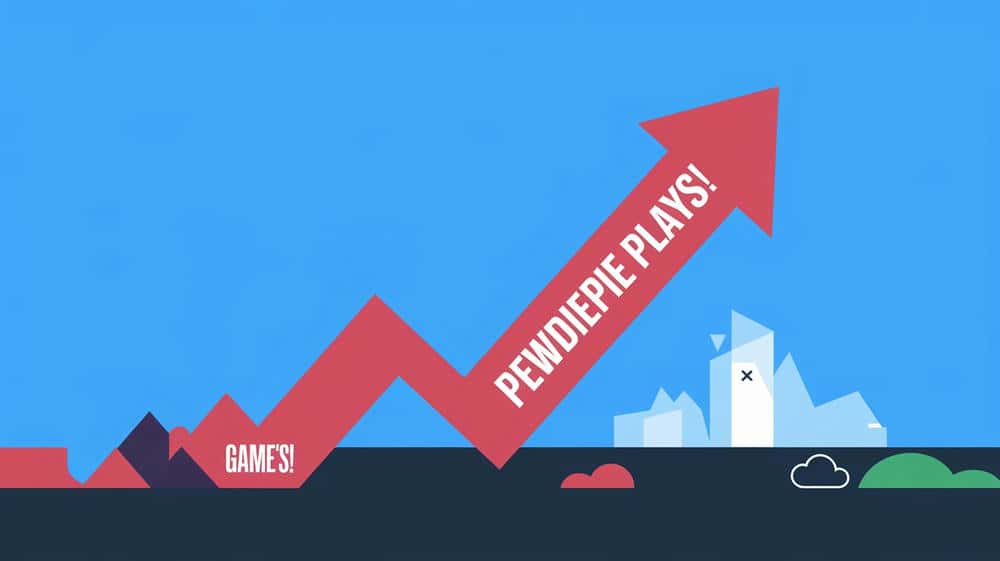
* H3: How PewDiePie’s Playthroughs Impact Game Discoverability
The mechanism behind the “PewDiePie Effect” was straightforward: exposure to his colossal audience. With tens of millions, eventually over 100 million, subscribers, a single video could introduce a game to more people than many traditional marketing campaigns. This was particularly transformative for independent developers who often lacked large marketing budgets. Games like Slender: The Eight Pages, Goat Simulator, and numerous Amnesia custom stories saw massive surges in interest, downloads, and discussion directly following his playthroughs. He effectively became a primary source of game discovery for a huge segment of the gaming audience, turning his channel into a launchpad for many titles that might otherwise have remained unknown. His enthusiasm (or sometimes frustration) was infectious, prompting viewers to seek out the games themselves.
* H3: Influence on Viewership and Gaming Trends
PewDiePie’s influence extended beyond individual games to shape broader trends within the YouTube gaming community and viewership patterns. His choice of games often dictated what became popular among other creators looking to capture similar audiences. The horror game craze of the early 2010s was significantly fueled by his success in the genre. His reaction-based commentary style, characterized by high energy, humor, and direct address to the audience (the “Bros”), was emulated by legions of aspiring YouTubers. Perhaps the most striking example of his trendsetting power was the Minecraft resurgence in 2019. While Minecraft was always popular, his series brought it back to the forefront of YouTube gaming culture, inspiring countless others to return to the game and leading to a massive spike in Minecraft-related content across the platform. His ability to reignite interest in a decade-old game demonstrated his enduring influence on viewing habits.
B. Iconic Games Played by PewDiePie: A Comprehensive Look
H2: The Horror Game Era That Launched a Phenomenon
No discussion of PewDiePie Games is complete without acknowledging the foundational role of horror games. This genre wasn’t just something he played; it was the bedrock upon which his entire channel was built in the early years. His authentic, often hilarious, reactions to jump scares and psychological tension captivated viewers and differentiated him from other nascent Let’s Players. The horror era established his initial massive audience, defined his early comedic persona, and cemented his place as a YouTube gaming pioneer.

* H3: Amnesia: The Dark Descent – The Breakthrough Series
If one game series can be credited with launching PewDiePie into superstardom, it’s Amnesia: The Dark Descent. His playthroughs of this atmospheric horror masterpiece became legendary. Armed with his webcam and expressive reactions, PewDiePie navigated the terrifying corridors of Brennenburg Castle, and audiences couldn’t get enough. His genuine fear, punctuated by high-pitched screams, nonsensical babbling (“Stephano!”, “Mr. Chair!”), and unexpected moments of bravery or cowardice, created a uniquely engaging and comedic viewing experience. This wasn’t just gameplay; it was performance art fueled by terror. The Amnesia videos rapidly accelerated his channel’s growth, attracting millions of views and subscribers. Memorable moments involving inanimate objects gaining personalities (like the golden statue Stephano) became inside jokes within his burgeoning “Bro Army” community, solidifying the series’ pivotal role in his career.
* H3: Memorable Custom Stories and Fan-Made Horror
Beyond the main Amnesia game, PewDiePie delved deep into the world of custom stories – fan-made modifications that offered new scares and narratives using the game’s engine. This became a consistent source of content, allowing him to continue delivering the horror reactions his audience loved while showcasing the creativity of his community. He played countless custom stories, ranging from genuinely terrifying experiences to more humorous or bizarre creations. This engagement fostered a symbiotic relationship: fans created content specifically hoping he would play it, and he, in turn, gave these amateur creators massive exposure. This exploration wasn’t limited to Amnesia; he frequently played other fan-made horror games and mods, constantly seeking new thrills and demonstrating his connection to the grassroots horror game development scene.
* H3: Other Foundational Horror Titles (e.g., Outlast, Slender)
While Amnesia was the cornerstone, PewDiePie’s horror dominance was reinforced by his playthroughs of other influential titles from that era. To showcase the breadth of his early horror focus, here are a few key examples:
- Outlast: This found-footage style horror game provided ample opportunity for PewDiePie’s signature terrified reactions, navigating the horrors of Mount Massive Asylum with his characteristic blend of fear and humor.
- Slender: The Eight Pages: This simple yet terrifying indie game became a viral sensation, partly thanks to PewDiePie’s playthroughs capturing the sheer panic of being stalked by the Slender Man. His videos significantly boosted the game’s profile.
- Various Indie Horror Games: He frequently played smaller, often free, indie horror games found on platforms like IndieDB or Game Jolt, contributing to his reputation as someone who could unearth hidden gems within the genre.
These games, alongside Amnesia, solidified PewDiePie’s image as the “king of horror gaming” on YouTube during his early rise, attracting viewers specifically seeking thrilling and comedic reactions to scary situations.
H2: Exploring Blockbuster Worlds and Narratives
As PewDiePie’s channel evolved, so did his taste in games, moving beyond the constant high-energy reactions of the horror era. He began dedicating significant time to exploring the rich worlds and compelling stories found in AAA blockbuster titles. This phase showcased a different side of his content creation, often involving longer series, more thoughtful commentary on plot and characters, and engagement with the biggest releases in the mainstream gaming industry. It demonstrated his ability to connect with epic narratives and complex gameplay systems, appealing to audiences interested in more than just jump scares.
* H3: The Last of Us Series: Emotional Storytelling Highlights
PewDiePie’s playthroughs of Naughty Dog’s acclaimed The Last of Us and its controversial sequel, The Last of Us Part II, stand out as significant moments in his exploration of narrative-driven AAA games. These series allowed him to engage with deep, emotional storytelling and complex characters like Joel and Ellie. While his signature humor was still present, his commentary often shifted towards genuine investment in the plot, reactions to shocking twists, and discussions about the moral ambiguities presented in the games. Particularly with Part II, his playthrough generated considerable discussion among his audience regarding the game’s challenging themes and narrative choices. These series demonstrated his capacity for engaging with serious storytelling, offering viewers a different kind of connection compared to his earlier horror content.
* H3: Elden Ring: Embracing the Challenge of The Lands Between
More recently, PewDiePie dove headfirst into the sprawling, challenging world of FromSoftware’s Elden Ring. His playthrough showcased his willingness to tackle difficult games and his genuine enjoyment of exploration and discovery within its vast open world, The Lands Between. Unlike the frantic energy of his horror days, his Elden Ring streams and videos often featured a more relaxed, yet determined, approach. He shared his struggles with tough bosses, celebrated victories, and explored the game’s lore, often interacting with his chat for tips or shared experiences. The series was well-received, resonating with audiences who enjoyed watching creators grapple with demanding gameplay loops and immerse themselves in rich fantasy worlds, reflecting the broader popularity of Souls-like games on streaming platforms.
* H3: Notable AAA Game Playthroughs and Series
Beyond The Last of Us and Elden Ring, PewDiePie has played a wide array of other major AAA titles throughout his career. His engagement varied from full playthroughs to first impressions or highlight reels. Here are some notable examples that demonstrate the breadth of his AAA gaming:
- Grand Theft Auto V: He explored the chaotic open world of Los Santos, engaging in missions and general mayhem, often resulting in humorous situations.
- Red Dead Redemption 2: His playthrough allowed him to immerse himself in the detailed world and narrative of Arthur Morgan, showcasing appreciation for its atmosphere and storytelling.
- Cyberpunk 2077: Like many creators, he played CD Projekt Red’s highly anticipated RPG upon release, sharing his experiences with its ambitious world and initial technical issues.
- Various Call of Duty Titles: Over the years, he’s dipped into various installments of the popular shooter franchise, often focusing on multiplayer modes or specific campaign moments.
- *Assassin’s Creed Series: He has played multiple entries in Ubisoft’s historical action-adventure series, exploring different settings and engaging with their stealth and combat mechanics.
These examples illustrate that while horror and indie games were crucial, PewDiePie consistently engaged with the biggest titles in the industry, ensuring his channel remained relevant to mainstream gaming discussions and trends.
H2: Minecraft: Building Worlds and Reigniting Viewership
In 2019, PewDiePie made a somewhat unexpected return to playing Minecraft, a game he hadn’t focused on for years. What followed was nothing short of a phenomenon. This wasn’t just another Let’s Play series; it became a cultural moment for his channel and the wider YouTube community, leading to a dramatic resurgence in his viewership and engagement. The Minecraft series proved to be one of the most successful and defining chapters of his later career, showcasing his ability to create compelling content from emergent gameplay.
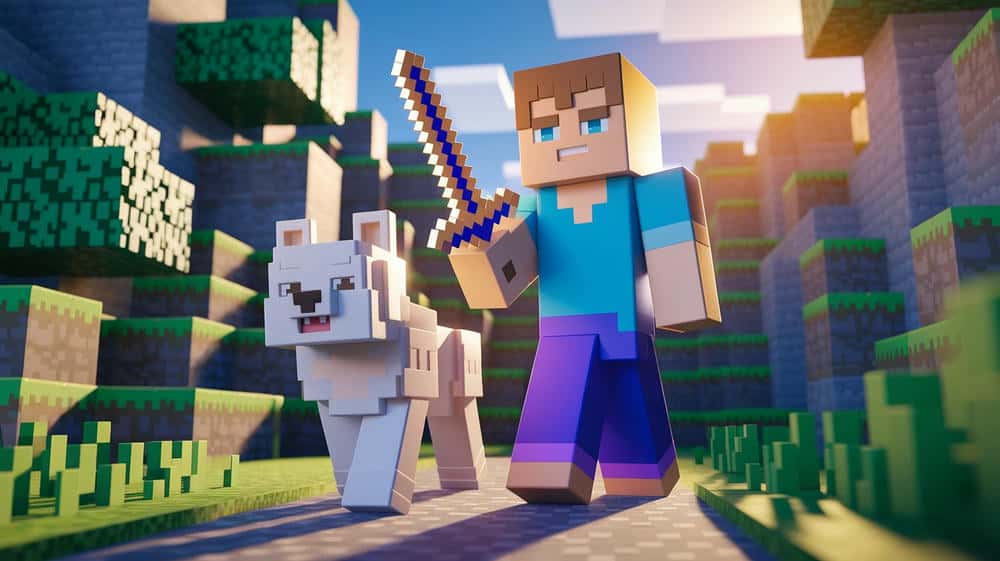
* H3: The Unexpected Resurgence and Survival Series
PewDiePie’s Minecraft survival series captured lightning in a bottle. Playing the game largely solo, he created an engaging narrative around his adventures, failures, and the animal companions he acquired. Characters like his loyal dog Sven, his oft-imperiled horse Joergen, Ikea Tower, and Water Sheep became central figures in an unfolding story filled with running gags, unexpected drama, and genuine moments of triumph and loss. The series tapped into a deep well of nostalgia for many viewers who grew up with Minecraft, but it also succeeded because PewDiePie injected his personality and humor into the sandbox environment, creating must-watch episodes. His interactions with the game’s mechanics, his building projects, and his “expert” advice created a compelling blend of comedy and surprisingly engaging gameplay progression that captivated millions.
* H3: Impact on Channel Growth and Community Engagement
The impact of the Minecraft series on PewDiePie’s channel was staggering. It triggered a massive surge in viewership, with individual episodes frequently racking up tens of millions of views, numbers reminiscent of his peak popularity years earlier. This translated into significant subscriber growth, helping push his channel definitively past the 100 million subscriber milestone. Beyond the numbers, the series fostered an incredibly strong sense of community. Memes originating from the series (like Sven, Joergen, “What?! You’ve never played Tuber Simulator?”, Pee Pee Poo Poo) flooded the internet. Fan art, animations, and discussions flourished, creating a shared cultural experience centered around his Minecraft world. This level of engagement highlighted how effectively he could still connect with his audience and create viral content. Fans could even celebrate their love for these moments with themed items, perhaps finding a cool Sven-inspired design over at pewdiepiemerch.net to remember the adventure.
H2: Diving into Mobile Gaming
While primarily known for PC and console gaming, PewDiePie hasn’t shied away from the world of mobile games. His engagement has taken various forms, from playing popular viral hits and sponsored titles to heavily promoting the mobile games developed under his own brand. Mobile gaming represents another facet of his diverse content portfolio, reflecting the platform’s massive reach and the different kinds of gameplay experiences it offers, including strategic titles like Clash of Clans.

* H3: Clash of Clans: Strategy and Mobile Adventures
One notable example of PewDiePie’s foray into mainstream mobile gaming is his involvement with Supercell’s massively popular strategy game, Clash of Clans. He created content featuring the game, showcasing its base-building and attack mechanics. This sometimes included sponsored segments, highlighting the intersection of major mobile titles and influencer marketing. His Clash of Clans videos allowed him to connect with the huge audience playing the game, offering his unique commentary style applied to mobile strategy gameplay. It served as a prime example of how he could integrate popular mobile titles into his content mix, whether for personal enjoyment or promotional purposes.
* H3: Other Popular Mobile Games Featured
PewDiePie’s mobile gaming wasn’t limited to just one or two titles. He often dipped into whatever was trending or caught his interest. Here are some other contexts where mobile games appeared on his channel:
- Among Us: During the game’s viral peak, PewDiePie joined other creators in playing Among Us, bringing his personality to the social deduction gameplay popular on mobile and PC.
- Sponsored Mobile Segments: Like many large creators, he occasionally featured sponsored gameplay of various mobile titles, often integrated into his regular videos.
- *His Own Mobile Games: As detailed later, he heavily promoted his own branded mobile games like Tuber Simulator and Pixelings, often playing them on stream or in dedicated videos.
- *Playing Viral Hits: He would sometimes play quirky or simple mobile games that achieved sudden viral popularity, often for comedic effect.
This variety shows that mobile gaming, while perhaps not a core pillar like horror or Minecraft, was a recurring element in the broad spectrum of PewDiePie Games.
H2: Championing Indie Games and Hidden Gems
Throughout his career, one of PewDiePie’s most significant positive contributions to the gaming ecosystem has been his consistent championing of independent games. Long before the “PewDiePie Effect” was a widely recognized term, he was using his platform to shine a spotlight on lesser-known titles developed by small teams or individuals. This role as a curator and amplifier for indie games introduced millions of viewers to unique, innovative, and often overlooked experiences, proving that his influence could be a powerful force for discovering hidden gems.
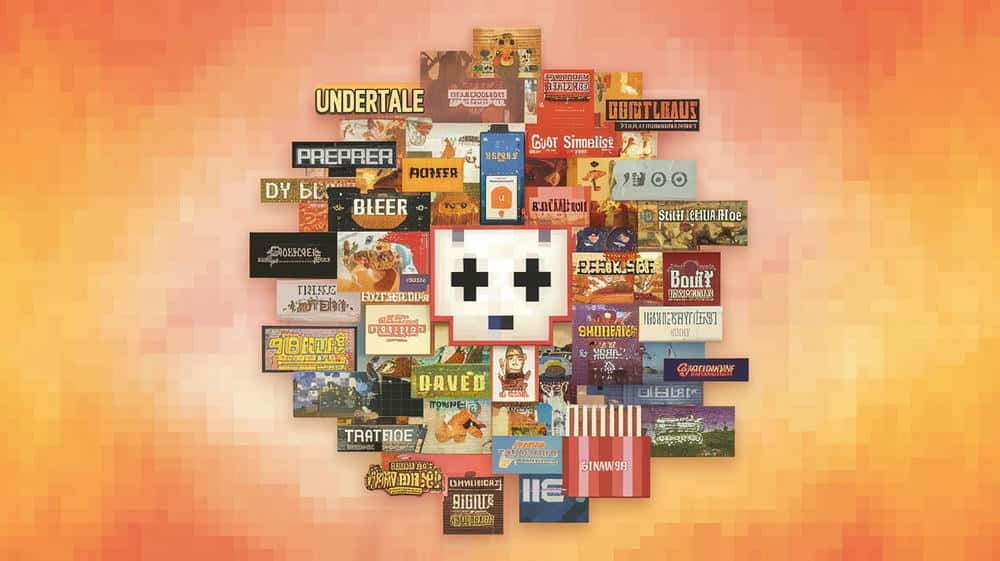
* H3: Spotlighting Unique Independent Titles
PewDiePie often seemed drawn to indie games that offered something different – whether it was a unique gameplay mechanic, a bizarre premise, clever humor, or a compelling atmosphere. Beyond the early horror phase (Amnesia, Slender), he played and brought significant attention to games like:
- Goat Simulator: His hilarious playthroughs of this intentionally buggy and chaotic physics sandbox game contributed significantly to its viral success.
- Happy Wheels: The brutal and comedic physics-based platformer was a long-running staple on his channel, showcasing user-generated levels.
- Undertale: While already gaining traction, his playthrough helped introduce the beloved RPG to an even wider audience.
- Papers, Please: He engaged with the unique bureaucratic thriller, showcasing its distinct gameplay and moral dilemmas.
- Surgeon Simulator: The intentionally difficult and funny surgery simulation game provided ample fodder for his comedic commentary.
His willingness to try unconventional titles made his channel a discovery platform where viewers could encounter games they might never have found otherwise. He acted as a tastemaker, his enthusiasm often being the deciding factor for viewers trying out a new indie game.
* H3: The Impact of PewDiePie’s Coverage on Indie Developers
The “PewDiePie Effect” was often most pronounced for small indie studios. Receiving coverage from PewDiePie could be a life-changing event for developers operating on shoestring budgets. A single video could lead to:
- Massive Sales Spikes: Games often saw their sales multiply overnight on platforms like Steam.
- Increased Visibility: Searches, social media mentions, and press coverage would surge.
- Server Strain: Sometimes, the influx of new players was so large it would crash the game’s servers, a “good problem” to have for developers.
- Community Growth: A dedicated player base could form rapidly around a previously unknown game.
This potential impact led many indie developers to actively try and get their games noticed by him, sometimes even referencing the phenomenon directly (e.g., “Can PewDiePie Play My Game?”). While not always guaranteed, the possibility of being featured made PewDiePie a key figure, desired or sometimes even feared, within the indie development community due to the sheer scale of his influence.
C. Games Developed For or Featuring PewDiePie
Beyond playing existing titles, PewDiePie’s brand expanded into the creation of video games specifically developed for or featuring him, primarily in the mobile space. These games leverage his personality, channel lore, and massive fanbase, offering players a chance to engage directly with the PewDiePie universe.
H2: PewDiePie’s Tuber Simulator: Build Your YouTube Empire
The most prominent and enduring game under the PewDiePie brand is PewDiePie’s Tuber Simulator. Released in 2016, this freemium mobile simulation game invites players to step into the shoes of an aspiring YouTube creator aiming to reach PewDiePie levels of fame. Developed by Outerminds Inc., the game captures the essence of PewDiePie’s humor and channel themes within a compelling simulation framework. It quickly became a massive hit on mobile platforms.

* H3: Core Gameplay Loop and Simulation Mechanics
The core gameplay loop of Tuber Simulator revolves around creating fictional “videos” on various topics (like gaming, comedy, animals). Making videos earns views and subscribers, which are the primary currencies for progression. Players use these earnings to purchase a vast array of items – furniture, equipment, posters, pets – to customize their virtual room. A better room setup and higher stats allow players to make more popular videos, thus gaining more views and subs faster. The game incorporates PewDiePie’s actual voice acting for tutorial guidance and reactions, adding his signature humor and personality directly into the experience. The objective is to climb the leaderboard, complete quests, and build the ultimate Tuber setup.
* H3: Key Features: Puggle, Craniac, and Events
To keep players engaged beyond the core loop, Tuber Simulator includes several key features and mini-games. Here are some of the most notable:
- Puggle: A Pachinko-style mini-game where players drop Pugs (inspired by PewDiePie’s own dogs, Edgar and Maya) down a pegged board to earn various rewards like views, Bux (premium currency), items, and shipping time reductions. It’s a highly addictive feature tied to item deliveries.
- Craniac: A claw machine mini-game allowing players to spend views for chances to grab bubbles containing exclusive items, Bux, Brain Points (for the skill tree), and other bonuses.
- Events: The game regularly hosts limited-time events themed around holidays, seasons, or specific topics. These events offer unique items, quests, and leaderboards, encouraging continued play.
- Item Crafting & Networks: Players can craft cosmetic items and join Networks (guilds) to collaborate with other players and gain passive bonuses.
- Knowledge Tree: A skill tree where players spend Brain Points to unlock permanent upgrades affecting video creation, shipping times, Puggle odds, and more.
These features add layers of strategy and collectability, contributing to the game’s long-term appeal.
* H3: Development by Outerminds Inc. and Release Details
PewDiePie’s Tuber Simulator was developed by the Canadian studio Outerminds Inc., who have collaborated with PewDiePie on multiple game projects. The game was officially released on September 29, 2016, for both iOS and Android platforms. Upon launch, it achieved immense success, quickly topping download charts in numerous countries and garnering generally positive reviews for its engaging gameplay loop, humor, and faithful representation of the PewDiePie brand. Its continued updates and events have maintained a dedicated player base for years.
H2: PewDiePie: Legend of the Brofist: Platforming Action
Before Tuber Simulator, PewDiePie and Outerminds Inc. released PewDiePie: Legend of the Brofist in 2015. This game took a different approach, offering a 2D side-scrolling platformer experience packed with action and references to PewDiePie’s channel and collaborators. The premise involves PewDiePie embarking on a quest to save his fans (the Bro Army), who have been kidnapped by the evil Barrel King. Players navigate challenging levels, battle enemies, and defeat bosses, all while enjoying voice acting from PewDiePie, Marzia (CutiePie), CinnamonToastKen, Jacksepticeye, Markiplier, and others. The game features unlockable characters, customizable difficulty levels, and numerous nods to memes and moments from PewDiePie’s videos, making it a love letter to his community. It was released on iOS, Android, Windows, and macOS, receiving positive feedback for its retro-inspired gameplay and fan service.
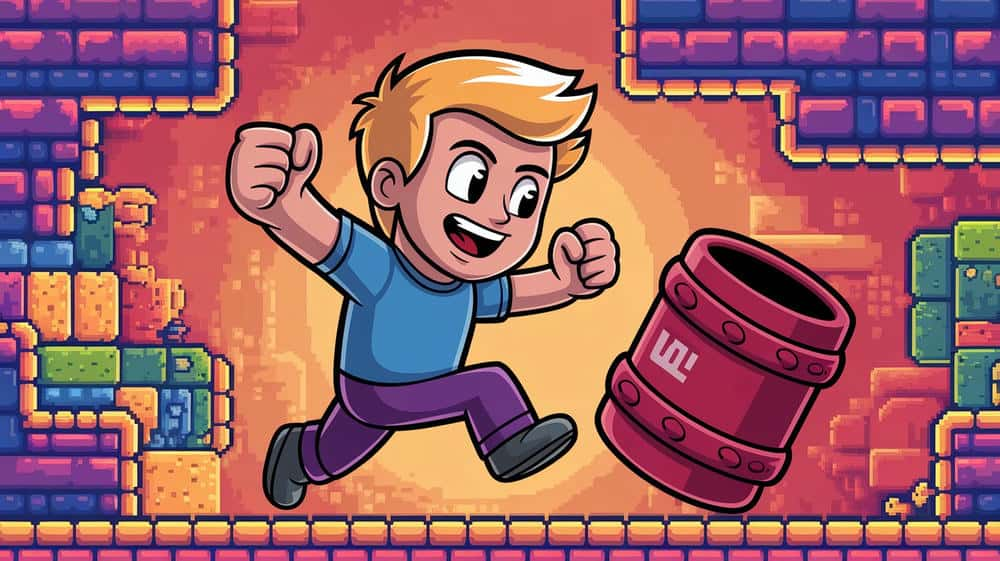
H2: PewDiePie’s Pixelings: Mobile Monster Collecting
Following the success of Tuber Simulator, PewDiePie and Outerminds launched PewDiePie’s Pixelings in 2019. This mobile game ventured into the popular monster-collecting RPG genre. Set within the same universe as Tuber Simulator (Pixelverse), players collect and upgrade a variety of quirky creatures called ‘Pixelings’. The core gameplay involves building a team of Pixelings and strategically deploying them in lane-based battles against waves of enemies across various levels. The game features a storyline, PvP battles, guilds, and, naturally, incorporates PewDiePie’s humor and characters from his channel lore (including Sven from his Minecraft series appearing as a Pixeling). While it enjoyed some initial popularity, its long-term status and server activity may vary compared to the enduring Tuber Simulator. [Note: As of recent checks, Pixelings servers have been shut down, so this point should reflect its past existence rather than current availability].
H2: Other Game Appearances, Collaborations, and Mentions
Beyond the games developed specifically for him by Outerminds, PewDiePie’s direct appearances as a playable character in major, non-PewDiePie branded games are rare to non-existent. However, his influence and presence have been felt in other ways:
- Collaborations/Promotions: He has collaborated with game companies for promotional events or content, sometimes involving custom in-game items or events themed loosely around him in existing popular games (though usually not a direct character model).
- References and Easter Eggs: Given his massive cultural impact, subtle nods, jokes, or Easter eggs referencing PewDiePie or his memes might appear in various games, placed by developers aware of his fanbase.
- Voice Acting (Beyond his own games): While not common for major roles, the possibility of minor voice cameos could exist, though his primary voice work remains within his own titles.
Essentially, his most significant presence within games remains concentrated in the titles created under his own brand in partnership with Outerminds.
D. PewDiePie’s Gameplay Style and Presentation
H2: The Signature “Let’s Play” Format and Commentary
PewDiePie’s success wasn’t just about which games he played, but how he played them. He didn’t invent the “Let’s Play” format (recording gameplay footage with commentary), but he arguably perfected it for a mass audience, becoming its most recognizable face globally. His take on the format was heavily centered on his personality. The game was often secondary to his reactions, jokes, and interaction with the audience. Watching a PewDiePie gaming video was less about seeing the game played expertly and more about experiencing it with him, sharing in his fear, laughter, frustration, and triumphs.
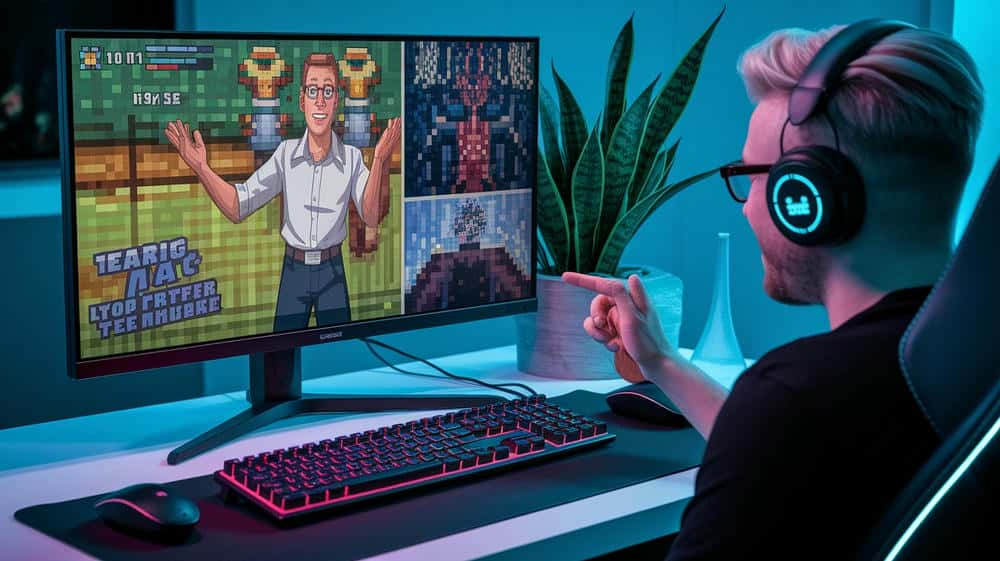
* H3: Blend of Humor, Reactions, and Personality
The core appeal of PewDiePie’s commentary style, especially in his peak gaming years, was its unique blend of elements:
- Exaggerated Reactions: Particularly in horror games, his screams, jumps, and panicked commentary were highly entertaining and became his trademark.
- Off-the-Cuff Humor: Jokes, puns, observational humor related to the game, and often absurd or surreal tangents kept the energy high.
- Relatability: Despite his fame, he often maintained a relatable “guy playing games in his room” persona, sharing genuine frustration or excitement.
- Inside Jokes and Community Building: He cultivated a strong sense of community (the “Bro Army”) through recurring jokes (“Stephano,” “Barrel!”), catchphrases (“How’s it goin’ bros?”), and direct address, making viewers feel like part of an exclusive club. Fans could show their belonging with iconic merch, like a classic Bro Fist design available at
pewdiepiemerch.net. - Personality: Ultimately, viewers tuned in for him – his energy, his opinions, his unique way of experiencing and narrating the games.
This blend created a highly engaging and addictive formula that propelled him to YouTube dominance.
* H3: Evolution of His Presentation Style
Just as his game choices evolved, PewDiePie’s presentation style also changed significantly over time. The hyperactive, scream-heavy style of his early horror videos gradually matured. While humor remained central, it became more varied, incorporating deadpan delivery, sarcasm, cultural commentary, and self-deprecating jokes. His reliance on exaggerated jump scare reactions lessened as he tackled different genres. Editing styles also shifted; early videos often featured rapid cuts and zooms for comedic effect, while later content sometimes adopted a more relaxed pace, particularly in series like Minecraft or during livestreams. This evolution reflected his personal growth, changing audience expectations, and the broader shifts in YouTube content trends away from constant high energy towards more authentic or varied presentation formats. Comparing an early Amnesia video to a recent Elden Ring stream highlights a marked difference in delivery and editing philosophy.
H2: Livestreaming vs. Edited Video Content
PewDiePie has utilized both traditional, pre-recorded edited videos and live streaming to share his gaming experiences. Each format serves a different purpose and offers a distinct style of engagement for his audience. While edited videos formed the backbone of his channel for years, livestreaming became an increasingly important component, especially for certain types of games and community interaction, allowing him to showcase PewDiePie Games in different ways.
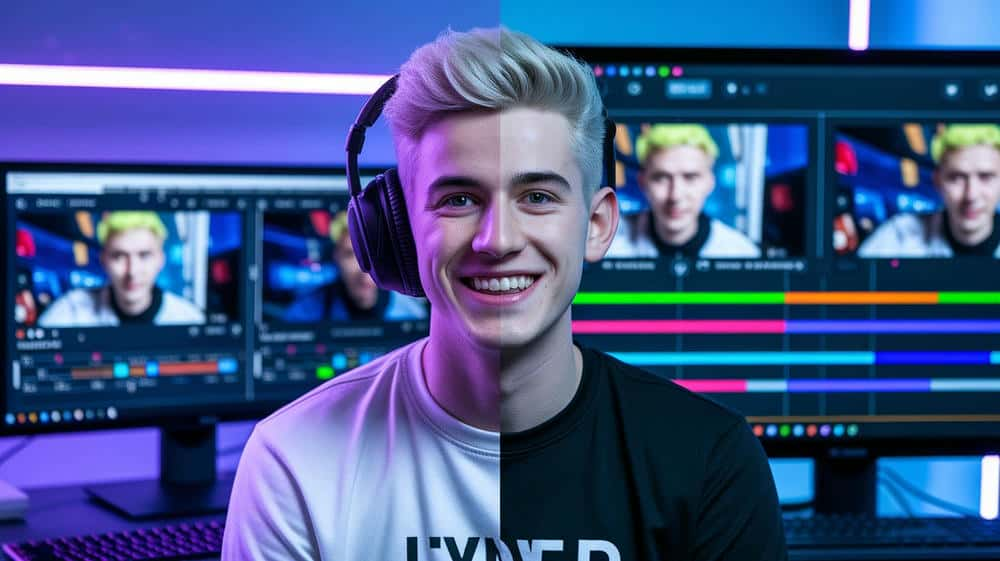
* H3: Engaging with the Audience in Real-Time
Livestreaming offered PewDiePie a platform for more immediate and unfiltered interaction with his audience during gameplay. Through live chat features (on platforms like YouTube or previously DLive), he could respond to viewer comments, questions, and donations in real-time. This format fostered a strong sense of community and participation, making viewers feel more directly involved in the gaming session. Livestreams were often used for games that benefit from ongoing engagement, such as multiplayer titles, challenging games where audience tips are welcome (Elden Ring), or long-form exploration games (Minecraft). The unedited, spontaneous nature of streams provided a different flavor of content compared to his tightly edited videos.
* H3: The Role of Edited Videos in His Gaming Library
Despite the rise of streaming, meticulously edited videos remained a crucial part of PewDiePie’s gaming content strategy throughout most of his career. Edited videos allowed for:
- Highlighting Key Moments: Cutting out downtime or repetitive gameplay to focus on the most exciting, funny, or important parts.
- Narrative Control: Structuring gameplay footage into a more coherent story or series arc (like in Minecraft).
- Enhanced Comedy: Using cuts, zooms, music, sound effects, and other editing techniques to maximize comedic timing and impact.
- Polished Presentation: Ensuring better audio/video quality and a more structured viewing experience.
Edited videos often served as the definitive record of his playthroughs for major single-player games or curated compilations of memorable moments from streams or longer sessions. They represent a vast and historically significant portion of the PewDiePie Games library.
E. PewDiePie’s Broader Impact on Gaming Culture
H2: Shaping Creator-Focused Game Design
The immense success of PewDiePie and other top gaming creators arguably had a tangible impact on how some games are designed. Developers, particularly in the indie space but also larger studios, began to recognize the marketing power of platforms like YouTube and Twitch. This led to considerations about a game’s “streamability” or “Let’s Play potential” during the development process. Features that create shareable moments (e.g., unexpected physics interactions, dramatic events), spectator modes, built-in streaming tools, or simply designing games that are fun to watch as well as play, could be influenced by the desire to attract coverage from major influencers like PewDiePie. The “PewDiePie Effect” wasn’t just about post-release marketing; it subtly shaped pre-release design philosophies for some developers aiming for viral success.
* H3: How Developers Consider Content Creator Reception
From a developer’s perspective, the rise of powerful content creators like PewDiePie introduced a new dimension to game launches and reception. They had to consider:
- Visual and Auditory Appeal: How will the game look and sound when broadcasted? Are there memorable moments that will translate well into video or stream highlights?
- Potential for Positive/Negative Coverage: A glowing playthrough from a top creator could be invaluable marketing. Conversely, harsh criticism or encountering game-breaking bugs during a major creator’s stream could be damaging publicity.
- Influencer Marketing Integration: The games industry increasingly embraced influencer marketing, with budgets allocated for sponsored streams or videos. Developers needed to navigate relationships with creators and agencies.
- Community Interaction: Creators often act as conduits for community feedback. Developers might monitor creator channels to gauge player sentiment and identify issues.
PewDiePie, as arguably the biggest gaming creator for a significant period, was a central figure in this dynamic, demonstrating early on the symbiotic, and sometimes complex, relationship between game developers and online content creators.
H2: Navigating Controversies within the Gaming Sphere
It’s impossible to discuss PewDiePie’s long career and impact without acknowledging the controversies he has faced, some of which were directly linked to his gaming content or actions taken during gameplay streams. These incidents sparked widespread discussion about creator responsibility, online behavior, and the relationship between gaming culture and problematic language or actions. Addressing this aspect provides a more complete picture of his profile within the broader gaming world, acknowledging context often highlighted by media outlets and industry watchers.
* H3: Notable Incidents Related to Gaming Content
Several controversies specifically tied to PewDiePie’s gaming content drew significant attention and criticism:
- Use of Racial Slurs: Perhaps the most infamous incident occurred during a 2017 livestream of PlayerUnknown’s Battlegrounds (PUBG), where he used a racial slur in a moment of frustration. This led to widespread condemnation, apologies, and discussions about racism in gaming spaces.
- The Firewatch DMCA Takedown: Following the PUBG incident, Campo Santo, the developers of the indie game Firewatch, issued a DMCA takedown request against PewDiePie’s Let’s Play video of their game, citing his use of the slur as harmful to their association with him. This sparked debate about copyright law, developer activism, and creator conduct.
- Anti-Semitic Jokes/Imagery: While not always directly in gameplay, some controversies involved jokes or imagery presented within his videos (some gaming-related) that were widely criticized as anti-Semitic, leading to partnerships being dropped and further apologies.
These incidents highlighted the immense scrutiny faced by top creators and the potential real-world consequences of their online actions, particularly within the context of their gaming content.
* H3: Adaptations and Responses Over Time
In the aftermath of these controversies, PewDiePie issued apologies and explanations, expressing regret for his actions and language. His content strategy and public persona appeared to adapt over time. While his humor remained edgy, there seemed to be a greater awareness of the potential impact of his words and actions. He addressed the controversies directly on his channel, sometimes discussing the pressures of online fame and the learning process involved. These incidents fueled broader conversations within the gaming and online creator communities about setting standards for behavior, the responsibilities that come with large platforms, combating toxicity in gaming, and the ongoing challenge of navigating free speech versus harmful content. His journey through these controversies reflects the evolving landscape of online accountability for major influencers.
II. Supplemental Content
F. Your PewDiePie Games Questions Answered
H2: Frequently Asked Questions about PewDiePie and Games
Having explored PewDiePie’s extensive history with gaming, you might still have some specific questions. This section aims to provide quick answers to some of the most frequently asked questions about PewDiePie and the games associated with him, consolidating key information from the article.
* H3: What defines the “PewDiePie Effect” on game sales?
The “PewDiePie Effect” refers to the significant boost in public awareness, online interest (searches, discussions), and often sales or downloads that a video game experiences after being prominently featured in one of PewDiePie’s videos or streams. This effect was particularly impactful for indie games or lesser-known titles, sometimes transforming their commercial prospects overnight due to exposure to his massive audience.
* H3: Did PewDiePie develop his own games entirely?
No, PewDiePie did not develop his games entirely by himself. He collaborated closely with the Canadian development studio Outerminds Inc. on titles like PewDiePie’s Tuber Simulator, Legend of the Brofist, and PewDiePie’s Pixelings. His role was primarily conceptual, providing ideas, branding, voice acting, and promotional power, while Outerminds handled the actual game design, programming, and technical development.
* H3: Which game genres has PewDiePie played the most?
While horror games (especially Amnesia and related indie titles) dominated his early channel and remain iconic, PewDiePie has played a vast range of genres throughout his career. Significant playtime has been dedicated to sandbox games (Minecraft), action-adventure (AAA titles like The Last of Us, Elden Ring), simulation (Tuber Simulator), platformers (Legend of the Brofist, Happy Wheels), puzzle games, and countless indie titles across various genres. It’s hard to definitively rank them, but horror, sandbox, action-adventure, and indie games are certainly among the most prominent.
* H3: Is PewDiePie’s Tuber Simulator still actively updated?
[As of late 2023 / early 2024], Yes, PewDiePie’s Tuber Simulator generally continues to receive updates, primarily in the form of regular themed events (often monthly) that introduce new cosmetic items, quests, and limited-time rewards. While major feature additions might be less frequent than in its early years, the ongoing events indicate active support and maintenance by the developers at Outerminds Inc. to keep the dedicated player base engaged.
* H3: How did Amnesia contribute to PewDiePie’s early success compared to later games like Minecraft?
Amnesia: The Dark Descent was absolutely crucial for PewDiePie’s initial explosion onto the YouTube scene. His playthroughs defined his early reaction-based comedic style, attracted his first massive wave of subscribers (the “Bro Army”), and established him as a major force in YouTube gaming. Minecraft, particularly the 2019 resurgence series, played a different but equally vital role later in his career. It caused a massive revitalization of his channel, brought in huge viewership numbers, fostered immense community engagement through shared lore and memes (Sven, Joergen), and helped solidify his status long after his initial horror fame. Both were pivotal, but at different stages and in different ways.
* H3: Was PewDiePie featured as a character in any major games besides his own?
Generally, no. PewDiePie has not typically appeared as a playable character or major NPC in large, mainstream third-party video games (like Call of Duty, Grand Theft Auto, etc.). His significant in-game appearances are primarily confined to the titles specifically developed for him in collaboration with Outerminds Inc., such as Legend of the Brofist (where he is the main playable character) and Tuber Simulator (where his likeness and voice are central). Minor Easter eggs or references might exist elsewhere, but not substantial character roles.
* H3: What is considered PewDiePie’s most popular gaming series ever?
Defining the single “most popular” is subjective and depends on the metric (views per episode, total series views, cultural impact, duration). However, based on viewership and defining impact on his channel’s trajectory, the strongest contenders are:
- His early Amnesia: The Dark Descent playthroughs (including custom stories): Foundational to his success and defined his early brand.
- His 2019 Minecraft Series: Caused a massive channel resurgence, generated huge viewership and engagement, and created enduring memes and community lore. Both series represent peaks of popularity and influence at different points in his long career.
* H3: Where can fans currently watch PewDiePie’s gaming content?
The vast majority of PewDiePie’s gaming content, both past and present, can be found on his official YouTube channel, “PewDiePie”. While he has experimented with other streaming platforms like DLive in the past, YouTube remains his primary hub for both edited gaming videos and, when he does stream, live gaming content. His older videos, including iconic series like Amnesia and Minecraft, are archived there.
* H3: What is PewDiePie’s lasting legacy within the YouTube gaming community?
PewDiePie’s lasting legacy is multifaceted. He was instrumental in popularizing the “Let’s Play” format for a global audience, demonstrating the immense power of personality-driven content. He defined the “PewDiePie Effect,” showcasing how a single creator could dramatically impact game discovery and sales, particularly for indie developers. His style influenced countless other gaming creators, and his channel served as a major cultural hub for gaming memes and discussions for over a decade. Furthermore, his journey, including navigating controversies, has contributed to ongoing conversations about creator responsibility, online culture, and the influence of major personalities within the gaming sphere. He remains a benchmark figure in the history of online video and gaming content. Whether you’re a long-time fan wanting to reminisce or new to his content, exploring the world of PewDiePie Games offers a fascinating glimpse into YouTube history, perhaps even inspiring you to check out some fan-centric designs over at pewdiepiemerch.net.

Han Pham is a professional graphic designer with over 15 years of experience in branding, UI/UX, and digital illustration. She graduated from the Ho Chi Minh City University of Fine Arts in 2010 with a Bachelor’s in Graphic Design


